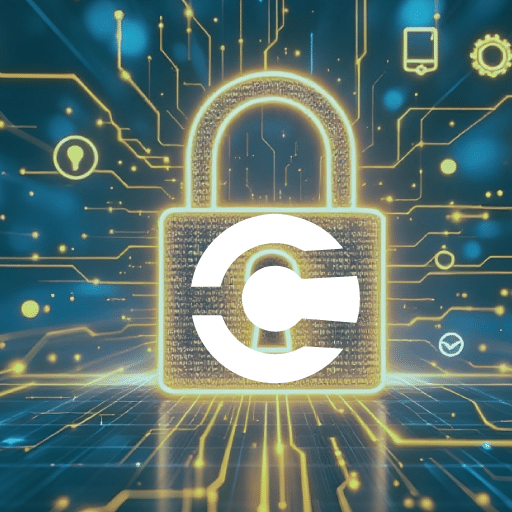What’s changed about microsegmentation in 2025? Why does it feel like there’s suddenly a renewed spotlight on this approach? Short answer: because the stakes are higher than ever. It’s no longer just a “nice-to-have” method of tightening your network boundaries. For many organizations, it’s become an operational necessity. Let’s talk about why.
Why the “Zero Trust” Playbook Is Everywhere
Microsegmentation = Zero Trust in Action
Zero trust has been on everyone’s lips for a while now, but in 2025, it’s grown beyond buzzword status. If zero trust is the philosophy (“Never trust, always verify”), microsegmentation is the tool that gets you there. Instead of letting attackers roam free once they’re inside, you draw strict boundaries around every critical component. That might sound complex, but new solutions are making segmentation more intuitive than ever, thanks to policy automation and advanced monitoring that adapt to real-time changes.
Rising Pressures from Every Angle
1. Compliance Meets Innovation
With new mandates rolling out at a faster clip, compliance is actually fueling innovation. Think of it this way. To meet these evolving regulatory obligations, companies need more granular control and airtight visibility. Microsegmentation plays directly into that, giving you the power to isolate sensitive workloads and prove to auditors that you can secure data even across sprawling, hybrid environments.
2. OT Security Under the Microscope
Operational technology (OT) is creeping ever closer to traditional IT environments. More cloud connectivity in factories, manufacturing lines, and public utilities means an expanded attack surface that threat actors love. When your OT devices run on long lifecycles and rarely see patch updates, implementing microsegmentation becomes a pragmatic defense. If your production line or energy grid is a prime target, the best move is to contain an incident before it ripples through your entire operation.
3. Nation-State and Ransomware Attacks Evolve
High-profile breaches have taught us a tough lesson: when attackers get in, they don’t stop at one server. They move laterally. By isolating network segments down to the workload level, you can limit how far that attack can spread. For OT-heavy industries, that’s an even bigger deal. You can’t exactly shut down a municipal water supply to root out a cyber threat without causing widespread disruption. Microsegmentation ensures you quarantine only what’s necessary, while the rest of the system stays afloat.
4. AI on Both Sides
AI isn’t just powering next-gen defenses, it’s also fueling more cunning attacks. Malware can morph faster, phishing attempts are becoming eerily convincing, and zero-day exploits show up seemingly overnight. If the speed of compromise is outpacing your patch cycle, microsegmentation offers a damage-control mechanism. AI-driven attacks might still get in, but they won’t spread as easily when each resource or device is sealed off behind dynamic security policies.
Access Report | Know why ColorTokens is named a ‘Leader’ in the Forrester Wave for microsegmentation solutions report, with top ratings across 11 categories.
Cloud and Connectivity Sovereignty
5. Shrinking Data Lakes, Growing Data Puddles
Organizations are opting to store data in smaller, locally governed silos due to rising concerns over data sovereignty. That means you don’t have one massive lake but multiple “puddles” living in various regions. Microsegmentation helps unify these scattered data zones with consistent security policies and encryption. You get localized control, critical for meeting each region’s compliance needs, without sacrificing a broader network view.
6. Multi-Cloud Is Real (and Real Complex)
Few enterprises run on a single cloud. Whether it’s acquiring a new business that uses a different provider, or just balancing workloads across multiple clouds, complexity is the new normal. Traditional perimeters can’t handle the constant flux of network endpoints. That’s where microsegmentation comes in, giving you the flexibility to define and manage policies from a single pane, regardless of whether your workloads sit in a private data center or scattered across several public clouds.
Practical Wins and Ongoing Challenges
7. Driving Down Your Attack Surface
Microsegmentation shines when it comes to shrinking your blast radius. Instead of a single, open environment, you define tight enclaves. So, if a breach hits one segment, it’s much harder for the attacker to pivot anywhere else. This drastically reduces the potential damage, saving you countless hours (and dollars) in cleanup and reputation management.
9. Balancing Complexity vs. Simplicity
Of course, not everything about microsegmentation is a walk in the park. The biggest barrier is often the perception of complexity. How do you map out all of your applications, dependencies, and user flows without drowning in spreadsheets? The good news is that segmentation software has evolved. Many solutions now offer auto-discovery tools that identify traffic flows for you and even suggest policy groupings.
10. The Human Element
People aren’t always thrilled about “another security measure,” especially if it feels like more overhead. That’s why education and training matter. Whether you’re rolling out microsegmentation in a hospital, a financial institution, or an industrial plant, your teams need to understand both the why and the how. Make it clear that this isn’t about micromanaging workloads. It’s about keeping the business online, even during a crisis.
Access Report | Learn why ColorTokens’ Xshield Microsegmentation Platform was named a top solution among 13 vendors in the GigaOm Radar report.
Charting Your Next Steps
So, what’s the big takeaway? Microsegmentation has become a linchpin for organizations trying to balance operational resilience, regulatory demands, and an ever-escalating threat environment. Think of it as your controlled environment suit in a virus outbreak: you might not stop the virus from existing, but you can prevent it from wreaking havoc on the entire population.
In 2025, if you’re serious about controlling your digital destiny, building microsegmentation into your security strategy is a must. It’ll help you limit breach impact, ease the compliance burden, and keep your employees (and customers) confident that you’ve got it all under control. And in a world where every second counts during an attack, the ability to isolate trouble at the workload level might just be your biggest competitive advantage yet.
If you want to know what microsegmentation can do for you, chat with one of our experts and explore possibilities.




